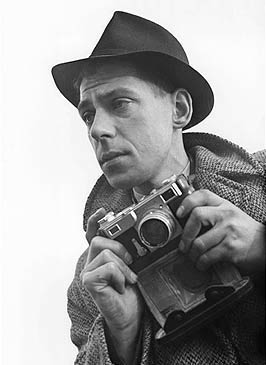Bert Hardy was a renowned British photographer known for his powerful and evocative images that captured the essence of postwar Britain. Hardy, born on May 19, 1913, in Blackheath, London, developed an early interest in photography. He began his career as a photojournalist in the 1930s, working for magazines such as
Picture Post and
Illustrated.
During WWII, Hardy worked as an official photographer for the Royal Air Force (RAF), documenting the lives of servicemen and the effects of war. His photographs captured the raw emotions and hardships endured by soldiers, providing a poignant and honest portrayal of the war.
I made a point of carrying a contact print of one of the most horrifying of my photographs around with me to show to Germans who didn’t believe that such things had really happened. -- Bert Hardy
Hardy continued to work as a photojournalist after the war, covering a wide range of subjects. He rose to prominence as a contributor to Picture Post, a seminal magazine known for its social documentary photography. Hardy's photographs frequently depicted working-class people's lives, providing a compassionate and empathetic perspective on their struggles and aspirations.
Hardy's photography was distinguished by his ability to capture fleeting moments of daily life with authenticity and sensitivity. His photographs frequently depicted ordinary people going about their daily lives, but with a profound depth and storytelling quality. Hardy's photographs struck a chord with viewers, providing a rare glimpse into the social, cultural, and political landscape of postwar Britain.
Throughout his career, Hardy received numerous accolades and awards for his outstanding contributions to photography. His work has been exhibited internationally and is part of several esteemed collections. Hardy's photographs continue to inspire and influence photographers and artists today, leaving behind a lasting legacy in the world of documentary photography.
Bert Hardy passed away on July 3, 1995, but his images remain a testament to his extraordinary talent and his enduring impact on the field of photography.
